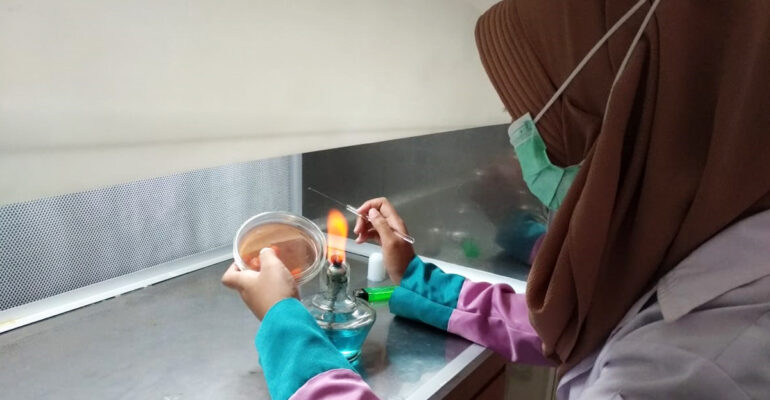IPB University Students Use Hemolytic Bacteria to Measure Blood Hemoglobin

The measurement of blood hemoglobin levels has been done by laboratory tests with practical measuring instruments, but the price is quite expensive. One of the blood diseases in humans related to erythrocyte levels is hematuria. It is characterized by the appearance of blood in urine caused by function disorders of the kidneys or urinary tract. Another health problem is anemia or decreased blood hemoglobin levels. Patients at the age of children and adolescents will experience a decrease in thinking, concentration, achievement, intellectual intelligence, and fitness.
Biosensor as a measuring device for blood hemoglobin levels has high sensitivity, thus, it could become an alternative to overcome this problem. The use of indigenous bacteria isolates as a source of the heme oxygenase enzyme for making biosensor needs to be developed because Indonesia has abundant biodiversity in which the enzyme needed can be easily obtained from local sources.
This condition initiated Ahmad Irvan Pratama, Aisyah Sahara, Sintia Intan Agsari to conduct research in the Student Creativity Program in 2019 entitled 'BEMO: Heme Oxygenase Biosensor from Hemolytic Bacteria as a Measurer of Blood Hemoglobin Levels' under the supervision of Dr. Suryani, a lecturer of the Department of Biochemistry, Faculty of Mathematics and Natural Sciences (FMIPA), IPB University. This research was done through several stages, namely culture production, enzyme isolation, biosensor making, and biosensor kinetics test.
Ahmad Irvan Pratama raised this research theme with the aim of producing a measuring device for blood hemoglobin levels based on the heme oxygenase enzyme. "In addition, it is also expected that a scientific article can be published in a nationally-indexed journal. This article will contain useful information about the method of measuring blood hemoglobin using heme oxygenase biosensor," he explained.
Sintia Intan Agsar, one of the team members, added that the results of this study had not been able to generate practical measuring instruments because the complementary tools are not yet available. But it was clear that the isolation of Serratia produced heme oxygenase enzyme. "There have been no findings of this before. There are only research journals mentioning that the heme oxygenase enzyme is obtained from E. coli only. However, our local isolate bacteria, Serratia marcescens can produce this enzyme which is characterized by a clear zone around the culture. The bacteria also have the ability to decipher heme in hemoglobin into Fe2+, CO2, and free electrons," said Sintia. (YDI/ris/zsp)



